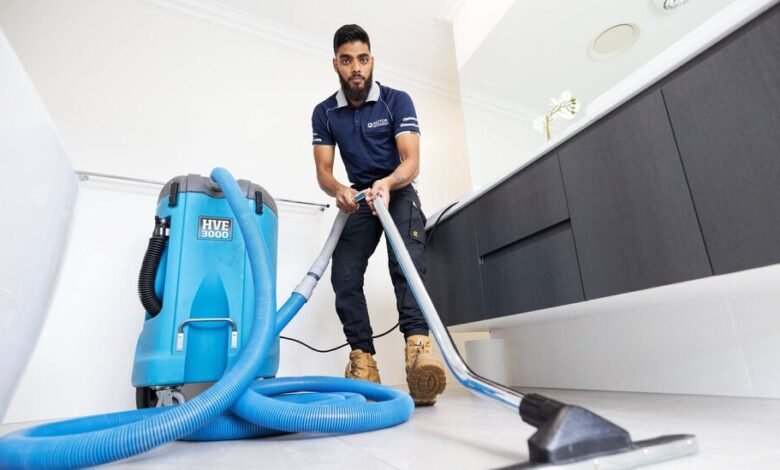Advanced 5 Techniques for Water Extraction from Carpets in Sydney

Water damage can wreak havoc on carpets, leading to potential mold growth, foul odors, and compromised air quality. Immediate action is essential to mitigate the effects of water intrusion, whether caused by flooding, plumbing issues, or other water-related accidents. Luckily, professional water extraction techniques can help save your carpets and restore them to their original state. In this blog post, we’ll explore the five most advanced techniques for water extraction from carpets in Sydney, ensuring efficient and effective restoration.
1. Hot Water Extraction Method
The hot water extraction method, often referred to as steam cleaning, is one of the most efficient ways to remove water from carpets. While primarily used for cleaning, this technique can be adapted for water extraction, especially when dealing with waterlogged carpets. Here’s how it works:
A specialized machine injects hot water mixed with cleaning agents deep into the carpet fibers. Simultaneously, a powerful vacuum extracts the water, dirt, and contaminants. The heat helps loosen any trapped debris and water, ensuring thorough removal. The method is ideal for large-scale water damage, as it covers large areas quickly and effectively.
This technique offers several advantages:
- It eliminates deep-seated water and contaminants.
- It’s highly effective for both surface-level and deep-water damage.
- The heat kills bacteria and reduces mold growth potential.
Although it can be quite intensive, hot water extraction is a go-to solution for both residential and commercial carpets when water damage is extensive.
2. Wet Vacuuming
One of the fastest methods of water extraction from carpets is wet vacuuming. Wet vacuums are designed to remove liquid from carpets and other surfaces efficiently. Professionals use industrial-grade wet vacuums that offer a higher suction power than typical household models. This method is especially useful when carpets are soaked and require immediate intervention to prevent further water damage.
The benefits of wet vacuuming include:
- Quick removal of standing water.
- Prevents the water from soaking deeper into the carpet padding.
- Provides a simple, straightforward approach for minor to moderate water damage.
Wet vacuuming is typically the first step in water extraction processes and serves as a foundation for more advanced techniques that may follow.
3. Dehumidification and Air Movers
Water extraction from carpets isn’t complete without proper drying techniques, and dehumidification combined with air movers is one of the most effective strategies. Even after extracting surface water, carpets can retain moisture deep within their fibers and backing, which can lead to mold growth if not addressed.
Air movers, often placed around the room, circulate air rapidly across the carpet’s surface to enhance evaporation. Industrial dehumidifiers work in tandem by removing moisture from the air, ensuring that any lingering dampness within the carpet is eliminated.
This method is essential for:
- Drying hard-to-reach areas within the carpet and underlay.
- Reducing drying times significantly.
- Minimizing the risk of secondary water damage, such as mold growth.
Professional dehumidification is especially crucial for larger spaces or when water extraction is delayed.
4. Absorbent Compound Technique
An advanced method of water extraction from carpets is the absorbent compound technique, which involves the use of specially formulated absorbent materials. These compounds, usually granular, are spread evenly over the carpet’s surface, where they absorb the moisture within the fibers. After a set amount of time, the compound and moisture are vacuumed away, leaving the carpet significantly drier.
This method is beneficial for:
- Carpets that can’t be moved easily or are located in areas difficult to access with traditional machinery.
- Delicate carpets, as this method is less invasive and doesn’t require large-scale equipment.
- Spot treatments, especially when water damage is localized.
While this technique may take longer than wet vacuuming, it is highly effective for areas that require a more delicate approach.
5. Sub-Surface Extraction
Sub-surface extraction is one of the most advanced techniques used for deep water removal from carpets. This method involves injecting air or a suction tool beneath the surface of the carpet, which pulls moisture directly from the padding and backing. Sub-surface extraction is particularly useful for carpets where the water has seeped beyond the surface layer and reached the underlay or subfloor.
The advantages of sub-surface extraction include:
- Efficient removal of deeply embedded water, which is critical for preventing long-term damage.
- Restoration of carpets without having to remove them from the property.
- Speeding up the drying process, ensuring a quicker return to normal use.
This method is ideal for homes or businesses dealing with extensive water damage, as it targets all layers of the carpet for a comprehensive solution.
Preventing Further Damage After Water Extraction
While water extraction is vital, there are steps that homeowners and businesses can take to prevent further damage to their carpets. After water extraction, the carpet will still need a thorough cleaning and deodorizing to eliminate any odors and bacteria that may remain. It is also essential to monitor the carpet for signs of mold or mildew growth over the following weeks, especially in high-humidity environments like Sydney.
Here are a few tips for post-extraction care:
- Clean carpets with anti-microbial treatments to prevent bacterial growth.
- Use a high-quality carpet cleaner to remove any dirt or stains that may have appeared due to the water.
- Continue to use dehumidifiers or air conditioning to maintain low humidity levels indoors.
- Periodically check the carpet’s padding and backing for any signs of dampness or mold.
The Importance of Professional Water Extraction
Handling water damage on your own can be overwhelming and risky, especially when it comes to large-scale damage. While DIY water extraction methods exist, they often fall short in addressing the full extent of the problem. Hiring professional water extraction services ensures that your carpets are thoroughly dried, cleaned, and restored to their former glory.
Professional services not only offer advanced techniques but also have the knowledge and tools to prevent further damage to your property. These professionals understand the specific requirements of different types of carpets, ensuring that the water extraction process is tailored to suit your flooring.
Why Choose Master Carpet Cleaning?
When it comes to water extraction from carpets in Sydney, you need a trusted and experienced service provider. At Master Carpet Cleaning, we specialize in advanced water extraction techniques that save your carpets from the long-term effects of water damage. Whether you’re dealing with flood damage, plumbing accidents, or any other type of water intrusion, our team has the expertise and equipment to restore your carpets efficiently and effectively.
With our professional-grade tools, we ensure the quickest drying times and the most thorough cleaning processes. Our services are tailored to your specific carpet needs, ensuring that your flooring not only looks great but is also safe for your family or business.
Contact us today to schedule your water extraction service and let us help you restore your carpets to pristine condition!




